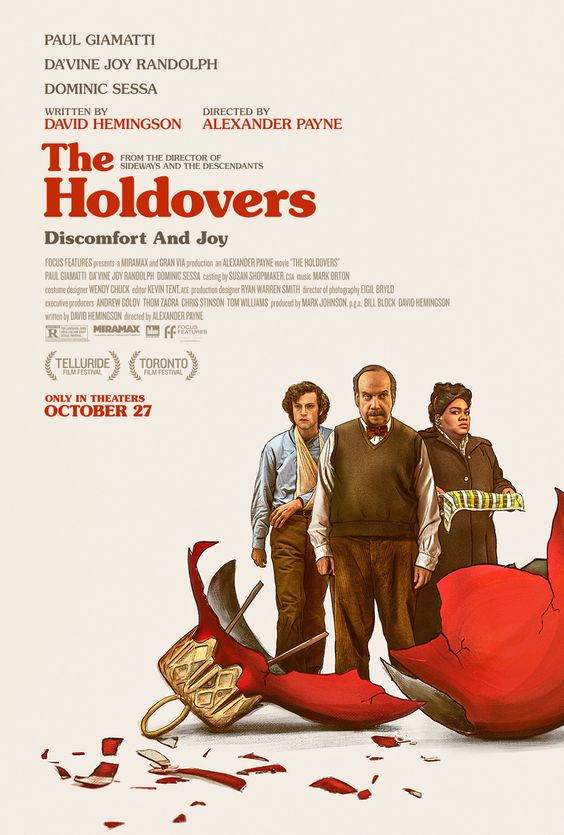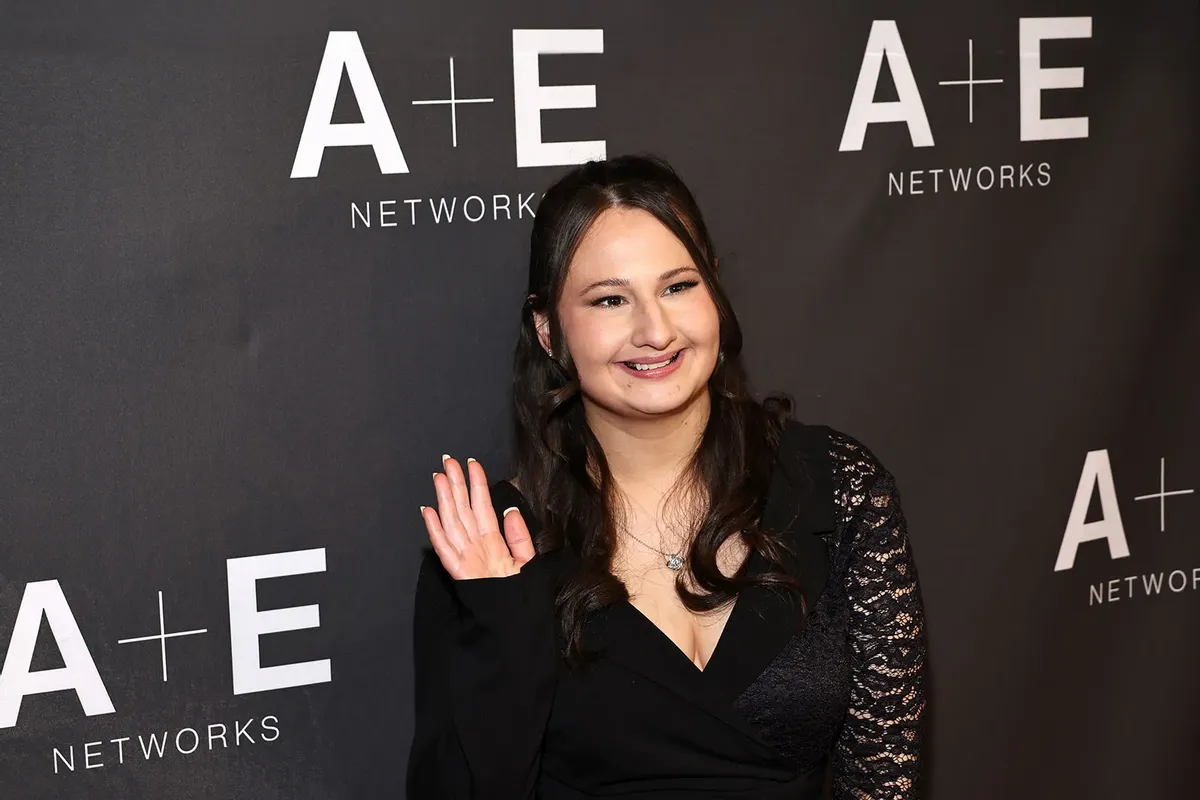Jumping for Joy
Four FHC students devote several ours each day to trampoline and tumbling, a sport that requires extreme focus, dedication, and energy.
Freshman Brendan McDonald can barely contain his excitement. He motions through the screen door and runs into Aerials and Baranis Gymnastics Center. He is followed by sophomore Jocelyn Prinz and freshman Max Hubbard, who also enter through the screen into a room full of flipping and twisting bodies, bouncing up and down on a vast array of white, rectangular trampolines. The flips being executed are no ordinary childhood trampoline stunts, and the athletes inside the gym are not just bouncing for fun. They are in the middle of a trampoline and tumbling practice, a multiple-hour event that occurs most days of the week.
“When you do a skill [on trampoline] … you just feel like you’re floating. It just feels so perfect,” McDonald said about trampoline, his favorite event in the larger sport of trampoline and tumbling. “A millisecond in the air feels like ages. It feels like a whole minute. Everything is slowed down in our heads when we do a skill.”
McDonald, Prinz, Hubbard, and freshman Kam Wilcox all compete in trampoline and tumbling, a sport that involves three components: trampoline, double-mini trampoline, and tumbling. For them, trampolining is far more than a childhood pastime that they’ve kept up with into their teenage years. It is the central focus of their packed schedules, an activity that has led them to national recognition and that gives them, according to Hubbard, “total freedom” to “do whatever the heck you want.”
Kam Wilcox:
Miller: full, cruise, rudi.
To most people, these words have no meaning. They are simply four words, each randomly extracted from the wide vernacular of the English language, creating no significant meaning. To Kam Wilcox, however, these words make perfect sense when placed together.
“Full,” “cruise,” and “rudi” are all types of twisting flips performed on trampoline. When performed in sequence, these three steps form a trampoline trick called a “miller.” Each component translates to a certain difficulty value. After this value is set, it depends on Wilcox to earn additional points for how well he executes the routine. The eyes of five judges scrutinize him as he moves through each skill. After the judges announce their scores, the phrase “full, cruise, rudi” is no longer just a sequence of words, or a set of instructions on which moves to do; it is a number. A score.
Wilcox performs these and many other trampoline stunts nearly every day during his frequent practices at Aerials and Baranis, which stretch anywhere between 1.5 and 4 hours in length. Though the amount of time he spends at the gym can be tiring, Wilcox makes it clear that his passion for the sport pushes him to continue working hard.
“I feel like it was just kind of my calling, my sport,” Wilcox said of his decision to pursue trampoline competitively.
Wilcox’s career in trampoline and tumbling had surprisingly unremarkable beginnings.
“When I was really little, I took fun classes for gymnastics, and then my sister joined high school Forest Hills gymnastics. I went to an open gym at the gym that they practiced at and I asked her coach if she could teach me a flip, and she did. Then my mom signed me up for classes, and after that I started getting competitive with it,” Wilcox said.
That was four years ago, and Wilcox has been improving his skills in trampoline and tumbling ever since, culminating in his qualification for the United States Trampoline and Tumbling Association’s National Team. Wilcox qualified for the team by placing 7th at the USTA Nationals in June.
Wilcox says that his love of the sport is what drives him to keep working hard and to rise to the many challenges that competing in trampoline and tumbling presents.
“Liking the sport and having fun with it have helped me a lot,” Wilcox said.
Brendan McDonald:
Brendan McDonald’s enthusiasm for competitive trampoline is difficult to miss once he begins talking about it.
“Trampoline is honestly my favorite event in this whole sport,” McDonald says, grinning. He continues on, jumping animatedly from one topic to the next, ready with an answer to any question concerning trampoline.
McDonald, a member of the USTA National Team along with Wilcox and Prinz, began trampoline and tumbling at age five. He got his start in artistic gymnastics but changed his path when a trampoline and tumbling gym went out of business and moved their equipment to Grand Rapids Gymnastics (GRG), where McDonald practiced at the time.
“[The trampoline and tumbling gym] brought in new equipment, and when I saw what they could do, it just inspired me and I just really wanted to try it out. When they left one day, I just tried stuff, and I fell flat to my face, and it was really funny, but then my mom encouraged me to join the team.”
McDonald listened to his mother’s encouragement and joined, despite the fact that he “couldn’t really bounce on a tramp to save [his] life, really.” After switching gyms and teams several times, he ended up at Aerials and Baranis, where he says his greatest success began.
“That’s when I really took off,” McDonald said.
McDonald’s achievements include making the national team, a national championship for synchronized trampoline, and rankings as the 5th and 2nd best male trampolinist in the nation at the advanced and elite levels, respectively.
McDonald’s intense practice schedule leaves limited time for school and other commitments, and he echoes the concerns of his fellow trampolinists about finding time for it all. He also says that mental toughness plays a large role in the sport.
“It’s a really nerve wracking sport in competition,” McDonald said. “You get to learn to deal with injury a lot while you’re in this sport because almost every week you end up rolling your ankle really bad or you end up twisting something or pulling a muscle.”
McDonald said he hopes to continue making the National Team every two years, in addition to becoming a leader and role model for other trampolinists.
“Once you get older and older and you’re the top person in your group, you start becoming a role model for other people, and there are people who start looking up to you. I’ve had mothers at Nationals come up to me and Kam [Wilcox], and they’ll say ‘Oh my gosh, my son really looks up to you and he hopes he can be like you someday,’ and it just really makes you feel good, that you’re inspiring people.”
Jocelyn Prinz:
“You can count the seconds until you hit the tramp, and it’s like time is frozen,” said Jocelyn Prinz, trying to explain the sensation of executing a flip on trampoline. “[It feels] graceful. Exhilarating.”
This is the feeling that Prinz fell in love with when she first tried trampoline and tumbling six years ago as a way to get better at cheerleading. She originally went to Aerials and Baranis to work on her roundoff back handspring, but ended up being invited to join their trampoline and tumbling team. In the six years since, Prinz has garnered national recognition in trampoline and tumbling. She too is a member of the USTA National Team and placed 7th in the elite level at last summer’s Nationals. Prinz has also been a national champion in synchronized trampoline.
Prinz admits that nerves can play a role in how she performs at meets. She says that the intensity of competition drives her to improve and remain focused.
“I really like competing, just getting prepared and having to compete under pressure, I like that. Seeing how my scores come up, putting in all that hard work,” Prinz said. “You kind of want to watch your competition to see what numbers you have to beat. … It kind of makes you rise to the occasion. Or just get really nervous.”
Prinz maintains an intense practice schedule similar to Wilcox’s and McDonald’s. Like her teammates, Prinz does not take full credit for her achievements. She emphasizes how much her coaches, who have trained world-class trampolinists, have helped her. She also notes the importance of her family.
“We’d [all] like to thank our parents,” she says of herself and other trampolinists. “They really help us. When we give up, they encourage us.”
Max Hubbard:
“’Oh what the heck, I’ll go in.’”
This was Max Hubbard’s thought process when he first decided to try trampoline and tumbling. Since then, the sport has become a much larger part of his life. Its influence on his daily routine continues to grow as he is trying to move from the sub-advanced to the advanced level, and hopefully travel to the next National competition with Prinz, McDonald, and Wilcox.
Hubbard started the sport four years ago at McDonald’s suggestion.
“I started with Brendan at GRG,” Hubbard said. “I wasn’t really doing anything as a sport, I was kind of hopping around, and Brendan just told me about how he was doing gymnastics at GRG and I decided ‘Oh what the heck, I’ll go in.'”
After a year at GRG, Hubbard took some time off, but ended up at Aerials and Baranis two years ago. Since then, he has reached the sub-advanced level of competition, and will next move on to the advanced and perhaps later the elite level.
Hubbard loves the welcoming community he has found through the sport.
“I think it’s kind of amazing,” Hubbard said. “I’m on B team [the less advanced team at the gym], but whenever I do go to A team, I know they might think I’m annoying, … but even when I’m getting something wrong, they’ll still help me with it. Just how willing they are, it’s crazy.”
Hubbard enjoys the free rein that trampoline and tumbling gives him to experiment. He admits that he often gets nervous before competitions, which are more structured, but the lack of rules when putting together routines and simply trying things out at the gym is one of Hubbard’s favorite things about the sport.
“[I feel] total freedom. I know that’s a typical thing to say when you’re in the air or something, but I mean, you can do whatever the heck you want,” Hubbard said. “I know when we’re competing it seems like everything’s super organized, but when you’re in the gym you can do whatever the heck you want, and it’s just so fun.”

Ally is entering her second year on staff and is an Editor in Chief this year. Ally served as the Copy Editor for the Central Trend last year and enjoyed...

























































































